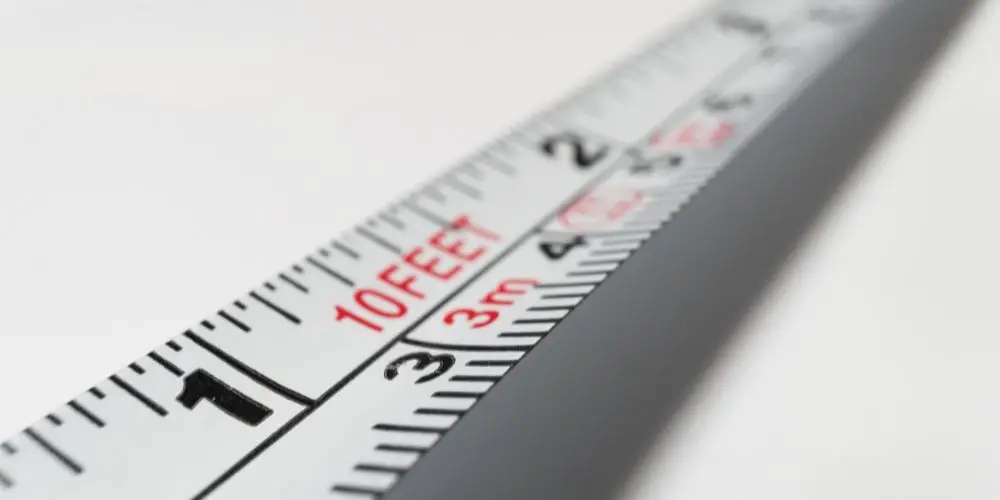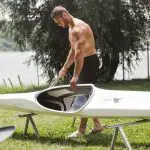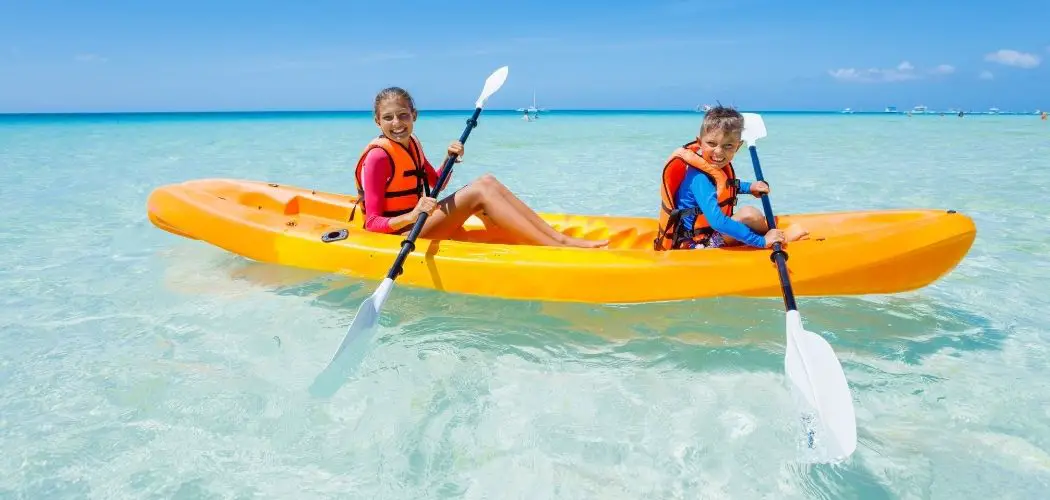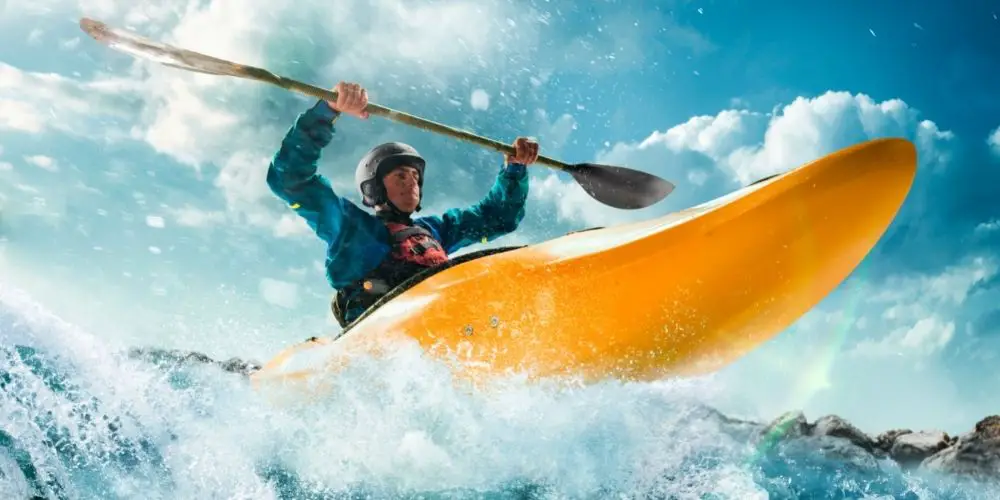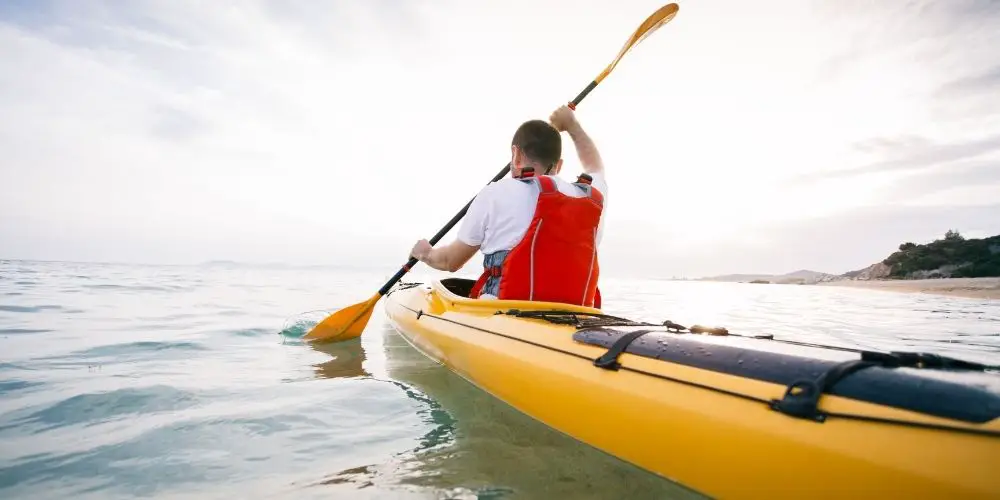A beginner paddler is often challenged with knowing what is the best paddle length to choose. Selecting the correct kayak paddle size is important for an efficient paddle stroke.
Yes, kayak paddles are sized by overall length: tip to tip. Paddle length is measured from blade tip to blade tip. That’s the tip or end of one blade to the tip or end of the other blade.
How to measure paddle length
Sizing a kayak paddle is straightforward and based on a few different factors. The wider your vessel is, the longer your paddle needs to be. Another important factor is the paddler’s height. Even for narrower boats, taller paddlers need longer kayak paddles.
There is yet another method to measure the kayak paddle length. It involves measuring only the shaft. In this method, only the part of the kayak paddle that is out of the water is what needs to be measured correctly to match your body size.
Industry-standard
The industry standard for measuring and describing the length of kayak paddles is metric units. So, the kayak paddles are sized in centimeters even though the vessels are measured in inches.
It’s a good idea to check the size guide from the website of any brand you’re considering. There might be slight variations from the specs below:
Here’s a kayak paddle sizing chart
| Paddler Height |
Kayak width under 23″ |
Width of kayak between 23″ to 28″ | Kayak width between 28″ to 32″ |
| Under 5′ tall | 210 cm | 220 cm | 230 cm |
| 5′ to 5’6″ tall | 215 cm | 220 cm | 230 cm |
| 5’6″ to 6′ tall | 220 cm | 220 cm | 230 cm |
| Over 6′ tall | 220 cm | 230 cm | 240 cm |
Body type
Simply put, the taller you are, the longer your paddle should be. This is an oversimplification, though, because many factors should be taken into account.
It’s your torso length that really matters. Read more on size of kayak paddle that you need.
Measuring torso length
The length of your torso is a significant aspect when sizing a kayak paddle. To measure torso length, you should sit on a chair with a straight back. The total distance between the chair’s surface and your nose is your torso length.
Follow this chart to find your ideal paddle length based on your torso length:
| Torso Length | Paddle Length |
| 22” | 180cm |
| 24” | 180-200cm |
| 26” | 190-210cm |
| 28” | 200-220cm |
| 30” | 210-230cm |
| 32” | 220-240cm |
| 34” | 230-250cm |
| 36” | 240-260cm |
| 38” | 250-270cm |
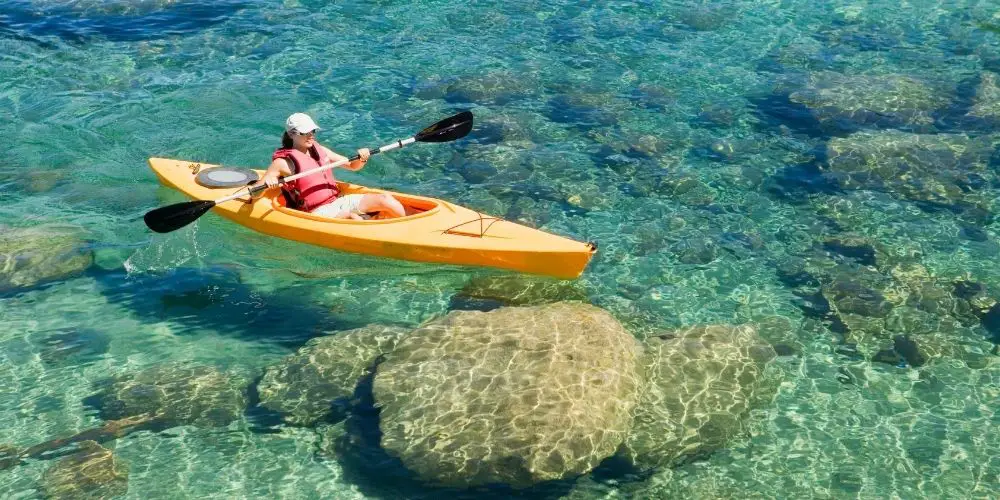
Stroke angle
Some people prefer to use strokes near the side of the boat while others like to put the paddles into the water further from the hull. Respectively, these strokes are known as high strokes and low strokes. Kayak paddles are designated as being for either low-angle or high-angle kayaking.
High strokes result in more speed. Low strokes are ideal for more casual paddling. Depending on your preferred style, the appropriate length of your paddle will vary. Use your torso length to figure out which length best suits your stroke style.
Design of the kayak
Not all kayaks are designed the same. The design of a kayak varies in width, depending on the purpose of paddling. The wider your kayak, the longer your paddle should be. When you’re kayaking, the design of your kayak is what you should focus on.
- Recreational kayaks: Recreational kayaks are wide and stable. They have a width of 26″ to 30″. You will need a longer paddle to reach the water easily.
- Touring kayaks: Touring kayaks are longer and narrower. They have a width of 22″ to 25″. You will need a short paddle to reach the water easily.
- Performance kayaks: Performance kayaks have a width of 19″ to 22.
- Sea kayaks: Sea kayaks are narrower. You will need a much shorter paddle to reach the water easily.
Tweener Sizes
There are always a few kayakers who don’t easily fit into the categories in a sizing chart. If the paddler falls between two sizes, it’s usually better to go shorter. Either size would work and paddler will probably be able to get away with using either size. The shorter size will also help you choose a lighter paddle.
If you have a shorter torso, you can still benefit from a longer paddle. The added reach will come in handy if you are piloting a wider vessel that sits lower in the water.
Trying out paddle size and types
No matter what style of watercraft you have, paddle size is important for a good adventure. It’s always a good idea to try out a few kayak paddle sizes and types before you commit.
On the water: The best way to test paddle lengths is heading out onto the water and doing some actual paddling. When doing this, use the kayak you’ll use on your kayaking trip and make sure to paddle with the right techniques. You’ll soon find out if the paddle length suits you or not.
Onshore: When you’re onshore, you can quickly figure out a good size paddle for you by holding out a paddle horizontally. Make sure that your elbows are bent at a 90-degree angle. The position of your hands should be around two-thirds of the distance from the shaft’s center and the point where the blade meets the shaft.
Another on-shore method is to stand up a paddle vertically next to you. Then, reach up with one arm, keeping it extended, and hook your first finger joints over the top of the blade. If your fingers can’t reach that far or if you can reach further over the blade’s tip, the paddle is respectively too long or too short.
Useful tip: While determining the size of a kayak paddle, take into consideration your preferred stroke style, the design of your kayak, and the length of your torso.
In closing
The size of your paddle matters just as much as its built and design. Selecting the right size is more of an art than a science. Having a correctly sized kayak paddle can make all the difference while on the water.
Hope you enjoyed reading this article! Did you find it helpful? Feel free to share your thoughts with us.
Stay cool, be safe, have fun!

